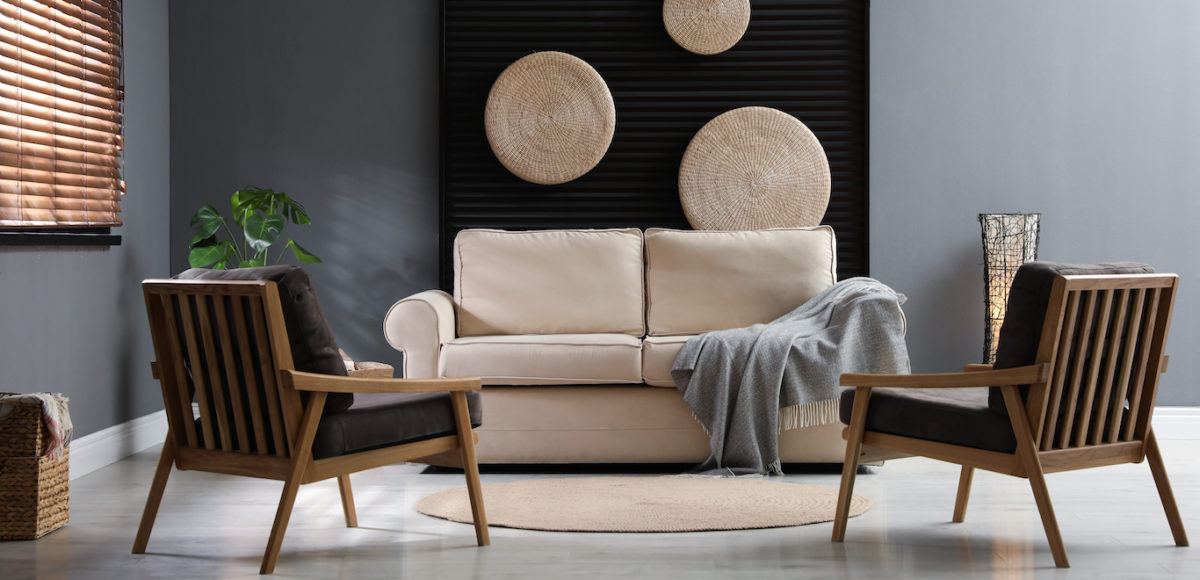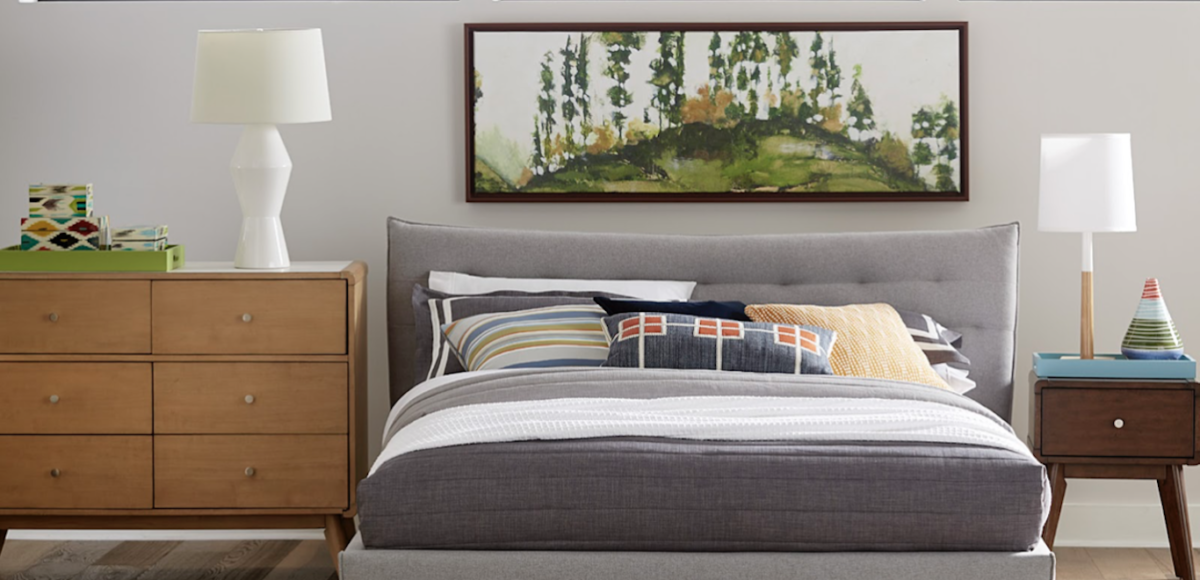Have you ever noticed that spaces designed by professional interior designers tend to have a certain “je ne sais quoi?” It might seem like they just have a magic touch, but their secret is pretty simple: add texture! Mixing polished finishes with rougher textures can add visual interest and give your spaces the extra pizzazz and sophistication you’re looking for. Learn how to use texture in interior design with our guide.
Why Use Texture in Interior Design?
Imagine these items in a room together: a plain leather couch, solid painted walls, a slick side table, and metal lamps. When you picture it, does it look, well, blah? That’s why texture is important! With only one type of texture in a room, there’s very little visual interest, and a room can feel cold and uninviting. Polished finishes reflect more light, and they certainly have their place in interior design, but they need balance from rough texture in order to avoid creating that boring, flat feeling in a room.
How to Use Texture for More Visual Interest
1. Choose furniture wisely.
When you’re designing a room, furniture is often the first thing you think about. And guess what? It also presents a huge opportunity to infuse texture within a room. Suede furniture in your living room can bring texture and visual interest without being busy, and a faux fur accent chair is the perfect way to add a quirky focal point to your bedroom. Consider visual texture, too! A bold floral or plaid pattern on a chair or loveseat stops the eye and helps break up overly sleek rooms.
2. Consider a high-pile or tufted rug.
Rugs come in all shapes and sizes, and they can vary widely in texture, too. When looking at the room you’re designing, consider how much texture is already there and choose a rug accordingly. If your furniture is made of smooth fabric and finished wood or stainless steel, choose a high-pile rug with a pattern instead of a flat or solid one. Plus, a rug is the perfect renter-friendly way to add luxury to your home. Even if you have carpet in a room, you might be surprised at how a layered rug can impact the overall feel. For smaller rooms with tile floors (like a bathroom or laundry room), rugs can create a slip-resistant zone and provide a sense of groundedness in the room.
3. Warm up your walls.
Blank, painted walls aren’t necessarily a design faux pas, but they aren’t doing your room any favors in terms of texture. Textured wallpaper or a textured painted accent wall can create a focal point in the room and add visual weight where there was previously nothing to look at. If you’re up for a bigger project, adding faux brick, reclaimed wood, or stone to your wall can create even more impact.
Can’t install a permanent wall feature? No problem. Use renter-friendly hanging hardware to add a fabric wall hanging or a large piece of wall art (with a rough texture, of course!) to an empty space. Remember that mounting a mirror or art behind glass will add a degree of smoothness to your room, so you may want to choose a frame with a raised pattern or unique finish for the right balance.
4. Style your surfaces.
When choosing tables, consider both the shape and the type of tabletop surface. A live-edge coffee table offers much more texture than a rectangular one in the bigger context of a room, and a clean-lined metal end table won’t add as much visual interest as a wooden one with carvings and handcrafted hardware or other details. As with anything else in a room, you can choose a table with smooth lines, but you’ll want to balance it with textured accessories (more on this in #5).
Permanent finishes and fixtures like countertops and brushed metal faucets are also a way to add texture to a room without adding clutter. Choose a leathered finish over a polished or honed finish to keep counters interesting. Of course, if you aren’t up for changing out countertops, consider a textured tray for the bathroom or a textured stone surface cutting board that can stay out. Add a few accessories to get the benefits of a natural stone finish without the cost.
5. Accessorize with intention.
From styling your bed with visually appealing linens to adding decorative accessories to a dining room table, you’ll want to blend lots of different textures in your accessories. Mix and match fabrics, metals, woods, and other natural materials until you have a look that feels well-balanced and interesting. Velvet textured throw pillows add a touch of luxury, whereas a rough textured pillow with knit or woven fabric creates a more boho vibe. You can also use lamps to draw attention to different parts of the room. Pair a metal lamp with a fabric or textured paper shade, or choose a mercury glass or hammered metal lamp for a different effect.
6. Don’t be afraid to experiment!
When it comes to using texture in interior design, it may take time to get things just right! If something doesn’t feel right in your room, consider the textures you have there already. Are there too many smooth lines and surfaces that make your eye zoom right through the room? Add more roughage for visual interest. Does the room feel too busy? Add in smooth and polished items to create more calm. It’s all about balance!
Step Up Your Interior Design with CORT Furniture Outlet
Is it time to overhaul your space? Find furniture, decor, and artwork at CORT Furniture Outlet. You’ll find stylish, durable pieces at up to 70% retail pricing, from decorative mirrors and rugs to lounge furniture. Shop online or drop by your local CORT Furniture Outlet to shop our ever-changing inventory — you never know what you’ll find!




